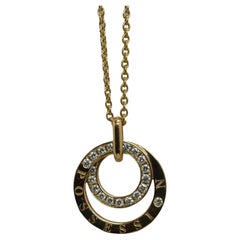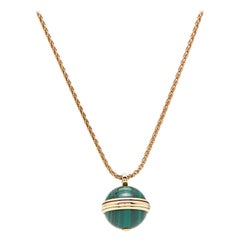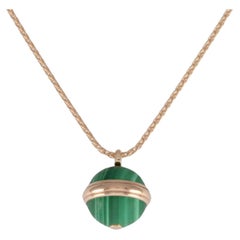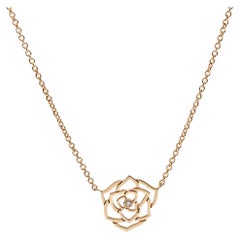Piaget Rose Pendant
Early 2000s Swiss Pendant Necklaces
Diamond, 18k Gold
2010s Pendant Necklaces
Recent Sales
21st Century and Contemporary Pendant Necklaces
Rose Gold, Gold
2010s Italian Pendant Necklaces
Diamond, Rose Gold
2010s Italian Pendant Necklaces
Diamond, Rose Gold
21st Century and Contemporary Pendant Necklaces
Diamond, Rose Gold
2010s Italian Pendant Necklaces
Diamond, Rose Gold
2010s Italian Contemporary Pendant Necklaces
Diamond, Rose Gold
21st Century and Contemporary European Contemporary Pendant Necklaces
Diamond, Gold, 18k Gold, White Gold
2010s Unknown Contemporary Pendant Necklaces
2010s Swiss Contemporary Pendant Necklaces
2010s Swiss Contemporary Pendant Necklaces
2010s Swiss Contemporary Pendant Necklaces
2010s Italian Contemporary Pendant Necklaces
2010s Italian Pendant Necklaces
Diamond, Onyx, Rose Gold
21st Century and Contemporary French Modern Chain Necklaces
White Diamond, Carnelian, Diamond, Gold, 18k Gold, Rose Gold
21st Century and Contemporary Swiss Pendant Necklaces
Diamond, White Gold
21st Century and Contemporary Swiss Pendant Necklaces
Diamond, 18k Gold
21st Century and Contemporary Pendant Necklaces
Diamond, Gold, 18k Gold, Rose Gold
Piaget for sale on 1stDibs
In 1874, at age 19, Georges-Édouard Piaget (1855–1931) began manufacturing handmade timepiece components and movements in a workshop on his family farm in La Côte-aux-Fées, Switzerland. The company expanded into luxury wristwatches and pocket watches under the direction of Georges-Édouard’s son, Timothée Piaget. Later, Timothée’s sons, Gérald and Valentin Piaget, would lead a team of talented craftspeople into a new era of innovation for the brand in both watches and luxury jewelry.
The Piaget family name was trademarked in 1943 and a large manufacturing facility was established in La Côte-aux-Fées. There they would perfect one of their signatures: ultra-thin movements. Valentin urged his design team to “do what has never been done before.”
In 1959, the Salon Piaget was opened in Geneva, where Piaget also set up workshops for goldsmithing and gem setting, introducing the company’s inaugural jewelry creations and establishing a creative hub where artisans were encouraged to push the boundaries of their designs. In 1963, Piaget released its first collection of watches with ornamental stones set into their dials (the brand's stone-dial watches are undeniable classics of watchmaking).
These artful creations caught the eye of such storied tastemakers as Jacqueline Kennedy Onassis, Elizabeth Taylor, Andy Warhol and Sophia Loren. In 1967, Yves Piaget collaborated with Salvador Dalí on a collection with pieces featuring the Dalí d’Or gold medals of the artist and his wife, Gala. Gala would also inspire the 1973 Limelight Gala timepiece and the subsequent collection.
Luxury jewelry designed by the company’s artisans has often cleverly reflected Piaget’s watchmaking origins, like the Possession collection, whose swinging pendants and turning rings nod to the movement of its watches. The Rose and Sunlight collections of bracelets, earrings and necklaces, meanwhile, reflect natural themes with a bit of Art Deco style. Piaget’s watches, likewise, have embodied an inventive approach to design, such as the Piaget Polo watch, which was introduced in 1979, popular for its luxurious refinement and widely imitated in the 1980s.
In 2001, the Piaget Haute Horlogerie was opened outside of Geneva, a facility that advanced its work in watchmaking and jewelry. The Swiss luxury watchmaker and jeweler now operates as part of the Richemont Group.
Find Piaget rings, necklaces, watches and other jewelry on 1stDibs.
Finding the Right Pendant-necklaces for You
Whether you’re layering multiple jewelry pieces or opting for a single strand, vintage pendant necklaces are versatile accessories that can elevate your casual wear as easily as they can add a creative flourish to your formal attire.
The earliest jewelry was less about accessorizing than it was about wearers arming themselves with amulets. In Ancient Egypt, some amulets featured a loop so that they could be strung around one’s neck. While rubies have long been one of the few gemstones that can give diamonds a run for their money, members of some ancient civilizations valued the stones from the get-go, donning ruby pendants as well as other stones with the belief that these adornments would bring protection, healing powers or strength. Today, we still wear our charm bracelets and charm pendants around our necks for good luck.
Later, pendant necklaces, like most fine jewelry, were worn strictly by royalty or the upper class and conferred wealth and prestige. This changed over time, thankfully, as wearing jewelry became more widespread, a democratized means of personal expression.
During the 18th and 19th centuries, pendant necklaces evolved from their status as spiritual amulets, but the jewels still carried deep personal significance. Victorian pendants, in particular, were part of the “mourning jewelry” tradition. Wearers would embed their pendants with locks of hair from a deceased loved one as a way of grieving in the wake of a loss. In the case of cameo jewelry, some pendants were even decorated with miniature hand-carved portraits in a detailed raised relief. Today, portraiture is still a characteristic of many of the hand-carved pendant necklaces offered by Italian jewelry house Scala Gioielli.
Luxury fine jewelry brands such as Cartier, BVLGARI and David Yurman offer their own unique interpretations of the cherished accessory, embellishing platinum or gold pendant necklaces with diamonds, sapphires and other stones.
On 1stDibs, find an extraordinary range of vintage pendant necklaces and other necklaces today.



